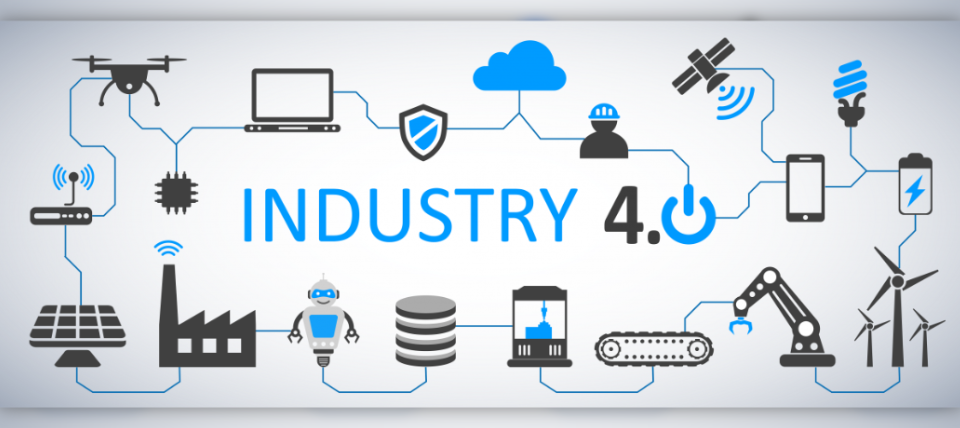Industrial Engineering & Supply Chain 4.0 Development

(Source: http://forbes.com)
Industrial Engineering & Supply Chain 4.0 Development
By Aldebaran Mahatma
The development of the industrial world has entered the Industry 4.0 era. This condition cannot be separated from the rapid development of industrial engineering science. Through the journal created, this journal aims to look from the perspective of the philosophy of science on how the presence of Industry 4.0 is linked to the development of industrial engineering science. Industrial engineering science synergizes with other sciences and engineering sciences so that it is very influential on the industrial world so that it can evolve to the emergence of the term industry 4.0. This idea brings the concept of combining digital technology and the internet with conventional industry which ultimately aims to increase productivity, efficiency and consumer service significantly and constantly. Apart from that, there are things that are put aside because there are consequences that must be faced regarding the negative impacts of industry 4.0, including the impact on knowledge in industrial engineering.
Digitalisation can be characterized as a radical alter in items and administrations, forms, or whole commerce models through the application of computerized innovation. In specific,iIndustrial 4.0 involves the digitalisation of the mechanical segment through the joining of the physical and virtual universes and the widespread interconnection of individuals and things. Enormous information and progressed analytics play a major part in industrial 4.0 and are seen as key ‘game changers’, in specific for SCM Extra innovations such as 3D printing, robots, and independent vehicles are anticipated to complement industrial 4.0-enabled SC frameworks A few writing surveys that reflect the quickly expanding intrigued in industrial 4.0 abridge its specialized establishments as well as common trade suggestions industrial 4.0 includes a few administrative challenges for companies which relate in specific to commerce show plan and the address how companies make, convey, and capture esteem in this setting this paper centers on the suggestions for SCM at the vital level relating to the working show. At the operational level, utilize cases of industrial 4.0 in fabricating and coordinations are considered in Thoben, Wiesner, and Wuest that investigate the connect between industrial 4.0 and incline fabricating frameworks. The suggestions of industrial 4.0 for SC working models have gotten as it were restricted consideration within the writing. Kiel, Arnold, and Voigt discover that industrial 4.0 innovation changes the esteem recommendation in a trade show basically by empowering arrangements that upgrade client operations forms. As a result, inner foundation, which constitutes one component of an SC working demonstrate, and client relationship administration must be balanced in like manner. Ehret and Wirtz propose service-based working models that include the arrangement of fabricating resources and related full-service operations, data and analytics administrations as well as proficient mass customisation through end-user integration. Laudien and Daxböck look at eleven fabricating firm cases to integrate three originals of industrial 4.0-enabled trade show changes. The suggestions for SC working models can be outlined as takes after.
To begin with, industrial 4.0 innovation speaks to a vital lever that can be utilized to improve the productivity of inside SC operations. Moment, firms can use their systems of accomplices, which are connected by industrial 4.0 innovation, to supply bundled customer-specific offerings. Finally, industrial 4.0 innovation makes the arrangement of computerized offerings utilizing value-added administrations based on computer program and the utilize of information conceivable. In outline, extant papers center generally on set up fabricating companies but without advertising an SC viewpoint that covers obtainment, coordinations, or industrial benefit arrangement. Besides, understanding into the suggestions of digitalization on SC working models is missing. In conclusion, in this setting a point of view on startup companies is lost which may yieldus other components in coordinates frameworks in industry. Insights into similarities and differences with respect to the digitalisation of the industrial sector. This paper aims at closing these gaps by providing a perspective on the implications of i4.0 for SC operations in the industrial context.
Supply chain innovation broadly defined, two main functions there are execution and control of essential activites (mainly sourcing, production and logistics) that create and deliver value to the end customer and integration of business partners into value networks and coordinating the corresponding business processes within companies and businesses. Due to SCM’s strong focus on progresses, SCI was considered primaly equivalent to process innovation.
In addition to the interest in classical aspects of innovation management, such as innovation strategy, organization and processes, SCI research is also concerned with innovation networks and innovation content. Innovation networks try to produce innovations through integration forming supplier-customer or horizontal alliances. In contrast, the content of innovation refers to the result of the innovation process. SC technology, and SC network structure. The effectiveness of the proposed conceptual model was validated using 36 use cases from a secondary dataset.
Source:
- https://www.researchgate.net/profile/Hoedi-Prasetyo/publication/328600510_Perkembangan_Keilmuan_Teknik_Industri_Menuju_Era_Industri_40/links/5bd7e7c1299bf1124facfead/Perkembangan-Keilmuan-Teknik-Industri-Menuju-Era-Industri-40.pdf
- https://www.researchgate.net/profile/Hoedi-Prasetyo/publication/328600510_Perkembangan_Keilmuan_Teknik_Industri_Menuju_Era_Industri_40/links/5bd7e7c1299bf1124facfead/Perkembangan-Keilmuan-Teknik-Industri-Menuju-Era-Industri-40.pdf

